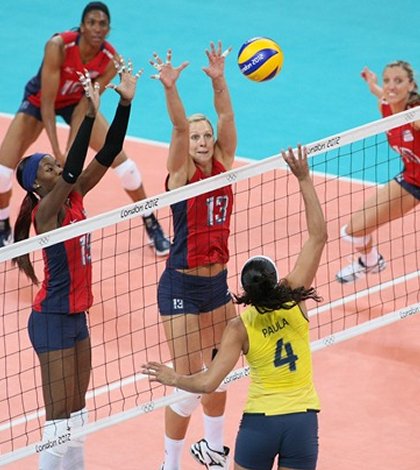Blocking in volleyball is at once the simplest skill to execute and the hardest one to do well. Timing the block correctly is part of that. This article will look at that timing aspect. This article will provide some advice on how to improve your timing to make you a more effective blocker.
Timing off the hitter’s jump
The single biggest determining factor in timing a volleyball block is matching your jump with the jump of the hitter. This doesn’t mean you need to jump at the exact same time as the hitter, but you won’t be too far off from that. Keeping this in mind may help with another facet of blocking which is making sure that your last bit of focus is properly on the hitter, not on the ball (subject for a separate article). It will also keep you from jumping when the hitter doesn’t actually jump (bad set, etc.).
Distance off the net
While the biggest timing factor is the hitter’s jump, you need to adjust your block jump based on how far off the net the hitter will be attacking the ball. The further back, the more you must wait to account for the longer time it will take for the ball to reach you. A back row attack, for example, requires a bit of a delay in your jump compared to a ball set tight to the net.
Speed of the hitter’s arm swing
The final little adjustment to timing comes by accounting for how hard the hitter attacks the ball. This is just like adjusting for the hitter’s distance off the net. An attacker with a fast arm swing will get the ball to you quicker than a player with a slow one. As a result, you have to delay a bit for the latter and jump a bit earlier for the former. If you can catch the hitter setting up an off-speed shot, that could also factor into your block timing (or your decision to go up at all).
Commit vs. Read
The jump, distance, and arm swing timing factors are going to be the same whether you are commit blocking (going up with a hitter without waiting to see if they are getting set) or reading blocking (waiting for the set). If you are commit blocking you still have to time your block based on the hitter’s jump, how near the net they are, and the speed of their swing.
Timing isn’t the only factor in good blocking, as getting up right on time won’t do you much good if you’re in the wrong spot. If you can combineproper timing together with proper positioning and blocking mechanics, though, you can put up a very nice block.






























